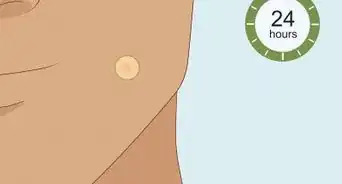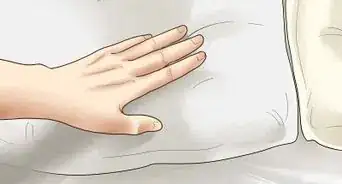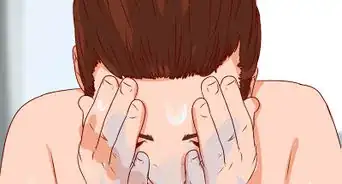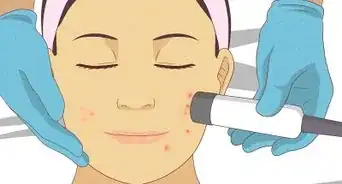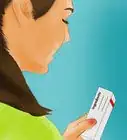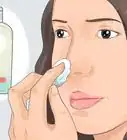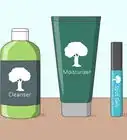This article was medically reviewed by Janice Litza, MD. Dr. Litza is a board certified Family Medicine Physician in Wisconsin. She is a practicing Physician and taught as a Clinical Professor for 13 years, after receiving her MD from the University of Wisconsin-Madison School of Medicine and Public Health in 1998.
There are 14 references cited in this article, which can be found at the bottom of the page.
This article has been viewed 156,437 times.
Topical tretinoin and benzoyl peroxide are commonly used to treat acne, but many dermatologists warn against using the two together at the same time. It has previously been thought that using benzoyl peroxide may decrease the concentration of tretinoin, but some studies have shown that this is not much of a concern.[1] However, both agents can cause skin irritation, and combined use may dry out or damage the skin.[2] If you are using the topical tretinoin gel (and not the pill form), talk to your doctor, and make sure you follow the recommended protocol for each medication. If you are taking the tretinoin pill, you do not have to worry about it interacting with the benzoyl peroxide. This advice is only if you are applying tretinoin and benzoyl peroxide to your skin.
Steps
Using Topical Tretinoin and Benzoyl Peroxide Concurrently
-
1Alternate the two medications for the first two weeks. While it's perfectly safe to use tretinoin and benzoyl peroxide concurrently, some dermatologists worry that it may cause some skin irritation. This is because benzoyl peroxide products typically contain a peeling agent.[3] However, studies have shown that the two medications are safe to use together if precautions are taken to reduce the chances of irritation.[4]
- Alternate which product you apply to your skin every day for the first two weeks. For example, if you use tretinoin on Monday, wait until Tuesday to use benzoyl peroxide.
- Continue alternating products until two weeks have passed to minimize the risk of irritation. After that point, your doctor may advise you that it's safe to use both products at the same time.
-
2Consider switching to use at the same time each day. After the first two weeks, your body should be a bit more used to both medications. At this point, you may want to consider switching to using both products together at the same time each day. Talk to your dermatologist before making any changes to your prescription medication regimen and ask about any possible risks or side effects.[5]
- Some studies have shown that applying tretinoin and benzoyl peroxide together at the same time each day may actually have a lower risk of adverse side effects than when they're used at different times.
Advertisement -
3Protect your skin from the elements. Tretinoin is known to cause photosensitivity, which means you'll have to protect your skin from sunlight while using this product on your skin. However, exposure to wind and cold weather may also irritate your skin on the affected area.[6]
- Wear sunscreen with a sun protection factor (SPF) of 15 or higher any time you will be in the sun. Even though you apply the medication at night, your skin may still be susceptible to sun damage during the day.
- Wear protective clothing to block your skin from the sun and strong wind. A wide-brimmed hat works best for protection in the sun, while a scarf might help cover your face from the wind during cold weather.
- Be aware that the risk of weather-related skin damage is highest during the first six months you use tretinoin. Take precautions whenever you're outside in any type of weather.
-
4Moisturize your skin regularly. Tretinoin has been known to cause skin irritation, including (but not limited to) warm/stinging sensations, redness, and scaling or crusting.[7] Similarly, benzoyl peroxide has been known to cause dryness and peeling of the skin.[8] You can minimize the side effects of both medications by keeping your skin well moisturized throughout the day.[9]
- Only use bland facial washes and moisturizers while using these medications. Choose products that are either free of alcohol or have a very low alcohol content.[10]
-
5Know when to see a doctor. Most side effects of these medications are minimal, and will eventually go away on their own with continued use. However, some reactions can be signs of a larger problem, such as a possible overdose of the medication. Seek emergency care right away if you experience burning, itching, swelling, or severe redness or scaling of the skin.[11]
Using Benzoyl Peroxide Correctly
-
1Talk to your doctor about benzoyl peroxide. Many over-the-counter products containing benzoyl peroxide are available without a prescription. However, some prescription-strength acne medications contain benzoyl peroxide as well.[12] The medicine you use will depend on the severity of your acne, and only a doctor or dermatologist is qualified to advise on the best treatment for your skin.
- Benzoyl peroxide comes in many forms, including liquid soap, bar soap, lotion, cream, and even foam.
- Common brand names containing benzoyl peroxide available in the U.S. include Acne, Acne 10 Gel, Acne Wash, Benzac, Benzagel, Benziq, and Brevoxyl.
-
2Check your skin before use. Benzoyl peroxide may irritate the skin. If you're using an over-the-counter product for the first time, it's best to test a small amount on one or two isolated areas of your skin for several days to determine whether you'll have a negative reaction. Even if you don't have a negative reaction, it's best to proceed with some degree of caution.[13]
- Never use benzoyl peroxide on skin that is windburned, sunburned, cracked, or cut unless your doctor tells you it is safe to do so.
-
3Apply benzoyl peroxide cream, gel, or lotion. If you're using a cream, gel, or lotion form of benzoyl peroxide, you'll want to follow the instructions closely. Make sure your skin is clean before using this product, and only use as much as the instructions indicate.[14]
- Use a non-medicated soap and clean, lukewarm water to wash the affected area before using benzoyl peroxide. When you're finished, gently pat your skin dry with a clean, soft towel.
- Apply only enough cream/lotion/gel to cover the affected area(s), or however much your doctor recommended in his or her instructions.
-
4Wash with a benzoyl peroxide soap or cleansing product. If you're using a benzoyl peroxide product that comes in a soap or cleansing lotion/bar form, you won't need to wash your face before applying it. Simply follow the directions on the package and only use as much of the product as the instructions or your doctor recommended.[15]
Treating Acne Safely with Tretinoin
-
1Consult your doctor about using tretinoin. Tretinoin gel is only available by prescription, and it treats acne by keeping the pores in your skin open and clear.[16] However, if your doctor prescribes you tretinoin (or any other retinoid product), you should let him or her know about any benzoyl peroxide products you currently use, including over-the-counter products.
- Common brand-name tretinoin products available in the U.S. include Atralin, Avita, Refissa, Renova, Retin-A, and Tretin-X.
- Do not use some forms of tretinoin, such as isotretinoin and oral tretinoin, if you are pregnant or may become pregnant, as some are known to cause serious birth defects. Topical tretinoin has not shown a risk for birth defects. [17]
- Doctors generally recommend that women use two forms of birth control during the entire treatment period and for one month after finishing the final dose of this medication.
-
2Take proper precautions before applying tretinoin to your skin. Topical tretinoin often causes skin irritation, especially within the first few weeks of use. However, if your skin irritation becomes severe or if your acne shows no signs of improvement after 8 to 12 weeks of continued use, talk to your doctor about possible complications.[18]
- Avoid washing the affected area or applying any other topical medications to that area for one hour before using tretinoin and for one hour after use.[19]
- Do not use any skin products that are abrasive or dry out your skin, including skin cleansers and products containing alcohol. Tretinoin has been known to irritate the skin, and these products may increase the risk of irritation.
-
3Apply tretinoin to the affected area as directed. It's very important that you follow the instructions your doctor gave you when using tretinoin gel. Do not apply more tretinoin gel in a given dose than your doctor recommends, and do not use this medication more than once in a given day. If you miss a dose, skip that dose completely and wait for the next scheduled application time.[20]
- Wash the affected area with a mild, non-abrasive and non-prescription soap at least one hour before applying tretinoin gel.
- Wash your hands with a mild soap before applying tretinoin to the affected area.
- Use either your clean fingertips, a clean piece of gauze, or a clean cotton swab to apply tretinoin to the affected area.
- You will not need much of this medication to see results. Some experts recommend using only a pea-sized drop, or whatever instructions your doctor specifically gives you.[21]
- Only apply tretinoin at night. Tretinoin is known to cause photosensitivity, so it's best to use this medication shortly before bedtime.[22]
Expert Q&A
Did you know you can get expert answers for this article?
Unlock expert answers by supporting wikiHow
-
QuestionWhat order should I apply them in if I'm using both at the same time?
 Janice Litza, MDDr. Litza is a board certified Family Medicine Physician in Wisconsin. She is a practicing Physician and taught as a Clinical Professor for 13 years, after receiving her MD from the University of Wisconsin-Madison School of Medicine and Public Health in 1998.
Janice Litza, MDDr. Litza is a board certified Family Medicine Physician in Wisconsin. She is a practicing Physician and taught as a Clinical Professor for 13 years, after receiving her MD from the University of Wisconsin-Madison School of Medicine and Public Health in 1998.
Board Certified Family Medicine Physician
-
QuestionI have used benzoyl peroxide for nearly one month. During the first two weeks, my acne got better. But in the last two weeks, I noticed my acne worsened. I feel itchiness and burning. Redness and new pimples have appeared. Am I allergic?
 Janice Litza, MDDr. Litza is a board certified Family Medicine Physician in Wisconsin. She is a practicing Physician and taught as a Clinical Professor for 13 years, after receiving her MD from the University of Wisconsin-Madison School of Medicine and Public Health in 1998.
Janice Litza, MDDr. Litza is a board certified Family Medicine Physician in Wisconsin. She is a practicing Physician and taught as a Clinical Professor for 13 years, after receiving her MD from the University of Wisconsin-Madison School of Medicine and Public Health in 1998.
Board Certified Family Medicine Physician You may not be allergic. The medicine may be drying out your skin, and your skin might be reacting to this by making more oil. Make sure you are using a cleanser and moisturizer and not just acne medicine. Adding a new topical medicine will improve acne when you have a healthy skin care routine as well.
You may not be allergic. The medicine may be drying out your skin, and your skin might be reacting to this by making more oil. Make sure you are using a cleanser and moisturizer and not just acne medicine. Adding a new topical medicine will improve acne when you have a healthy skin care routine as well.
References
- ↑ http://www.ncbi.nlm.nih.gov/pmc/articles/PMC2958193/
- ↑ http://www.accessdata.fda.gov/drugsatfda_docs/label/2014/020475s021lbl.pdf
- ↑ http://www.mayoclinic.org/drugs-supplements/tretinoin-topical-route/precautions/drg-20066521
- ↑ http://www.aafp.org/afp/2000/0115/p357.html
- ↑ https://clinicaltrials.gov/ct2/show/results/NCT00907257
- ↑ http://www.mayoclinic.org/drugs-supplements/tretinoin-topical-route/precautions/drg-20066521
- ↑ https://www.nlm.nih.gov/medlineplus/druginfo/meds/a682437.html
- ↑ https://www.nlm.nih.gov/medlineplus/druginfo/meds/a601026.html#side-effects
- ↑ http://emedicine.medscape.com/article/1069804-treatment
- ↑ http://www.aafp.org/afp/2004/0501/p2123.html
- ↑ http://www.mayoclinic.org/drugs-supplements/benzoyl-peroxide-topical-route/side-effects/drg-20062425
- ↑ http://www.mayoclinic.org/drugs-supplements/benzoyl-peroxide-topical-route/description/drg-20062425
- ↑ http://www.mayoclinic.org/drugs-supplements/benzoyl-peroxide-topical-route/proper-use/drg-20062425
- ↑ http://www.mayoclinic.org/drugs-supplements/benzoyl-peroxide-topical-route/proper-use/drg-20062425
- ↑ http://www.mayoclinic.org/drugs-supplements/benzoyl-peroxide-topical-route/proper-use/drg-20062425
- ↑ http://www.mayoclinic.org/drugs-supplements/tretinoin-topical-route/description/drg-20066521
- ↑ https://www.ncbi.nlm.nih.gov/pubmed/8098078
- ↑ http://www.mayoclinic.org/drugs-supplements/tretinoin-topical-route/precautions/drg-20066521
- ↑ http://www.mayoclinic.org/drugs-supplements/tretinoin-topical-route/precautions/drg-20066521
- ↑ https://www.nlm.nih.gov/medlineplus/druginfo/meds/a682437.html
- ↑ http://www.aafp.org/afp/2004/0501/p2123.html
- ↑ http://www.aafp.org/afp/2000/0115/p357.html
About This Article
Using tretinoin and benzoyl peroxide concurrently can irritate and damage your skin, so it's important to alternate between the 2 medications for the first 2 weeks. After 2 weeks, try using the medications at the same time each day. Additionally, use a moisturizer throughout the day to keep your face from drying and peeling. You should also protect your face with an SPF of 15 or higher when you're outside, since tretinoin can cause your skin to be extra sensitive to sunlight. To learn how to properly apply tretinoin to your skin, keep reading!



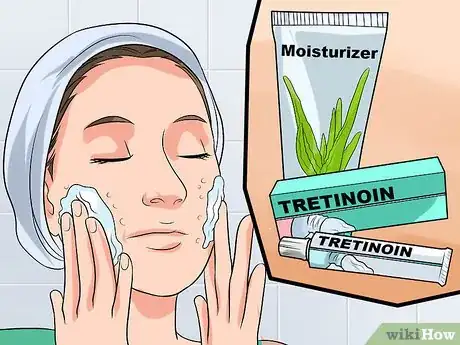



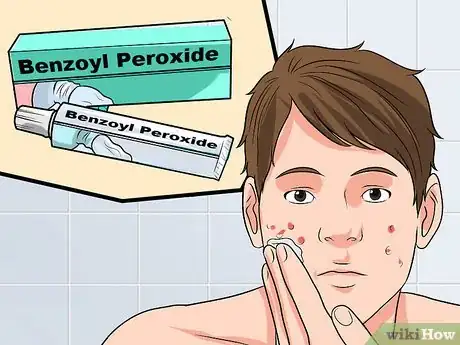




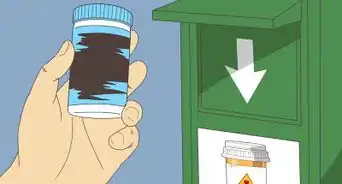

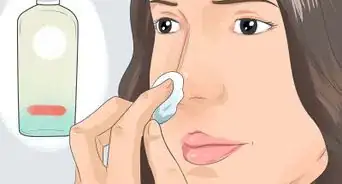
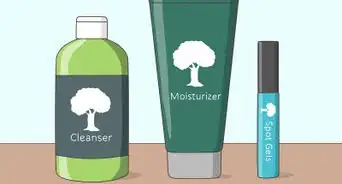
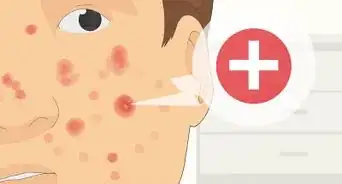

-Step-8-Version-2.webp)


